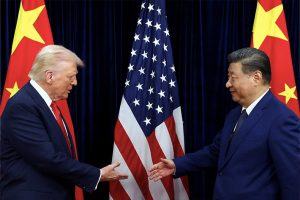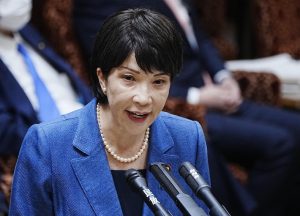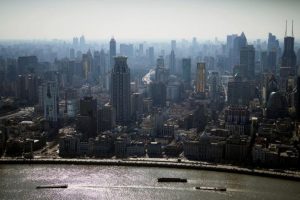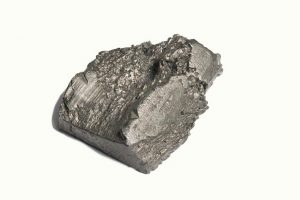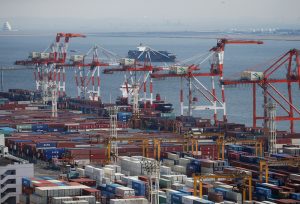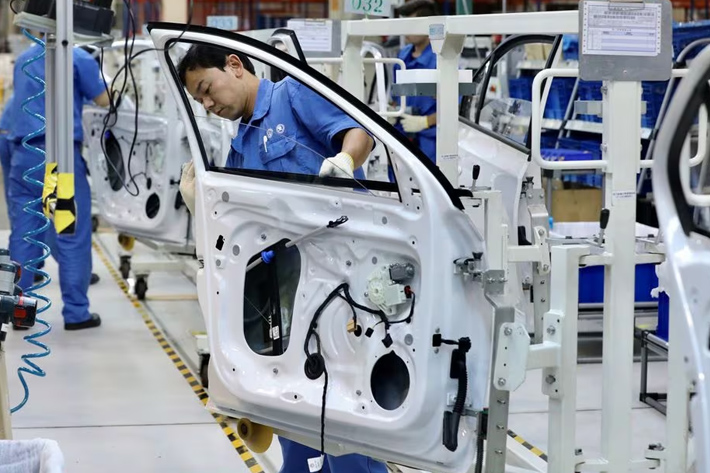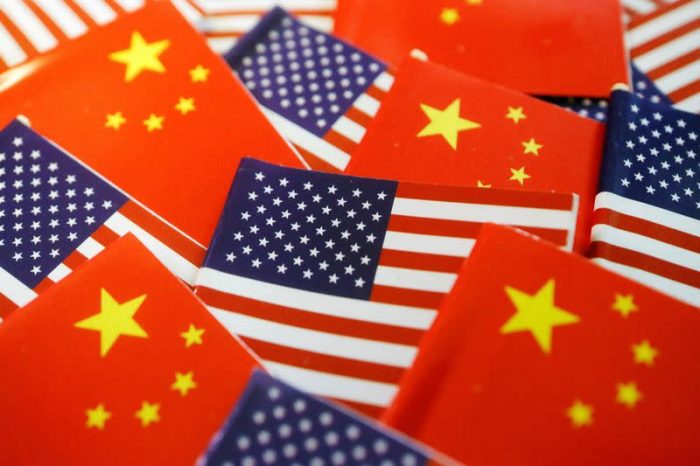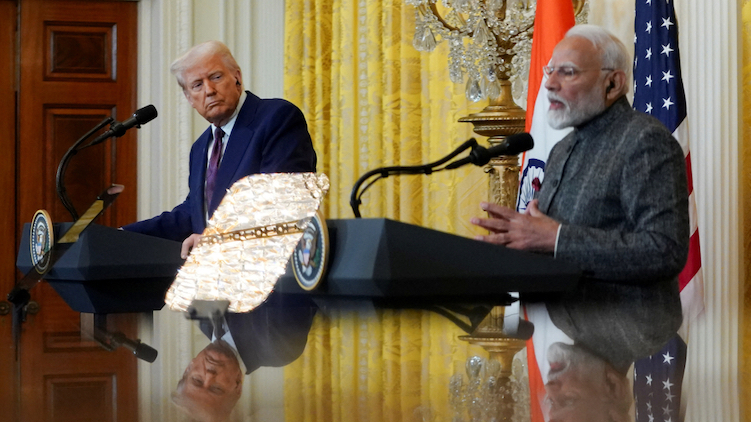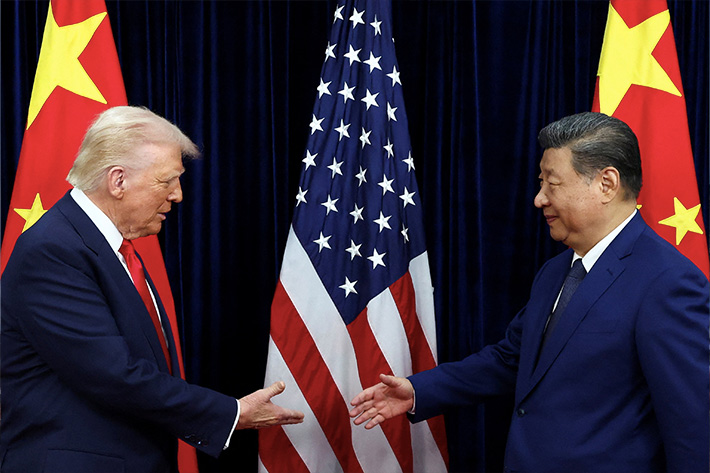The agreement by US and Chinese trade officials last weekend to slash tariffs for 90 days looks to have prevented mass job layoffs in China, but economists say they are still high enough to slow Chinese growth.
Beijing avoided a nightmare scenario, but analysts say that even with both sides slashing tariffs by 115% Chinese exporters and the local job market will take a hit with US tariffs still at 30%.
Chinese worker Liu Shengzun lost two jobs in just one month as US import tariffs shot up to triple digits in April, forcing a Guangdong lighting products factory, and then a footwear maker, to reduce output.
ALSO SEE: Trump Tells Apple CEO ‘I Don’t Want You Building in India’
Tariffs came down dramatically this week, but Liu has given up on factory jobs and is now back farming in his hometown in southern China.
“It’s been extremely difficult this year to find steady employment,” said the 42-year-old, who used to earn 5,000-6,000 yuan ($693-$832) a month as a factory worker and now doesn’t have a steady source of income. “I can barely afford food.”
Mass job losses that could have endangered social stability, which the ruling Communist Party sees as its top-most priority – would have undermined the party’s legitimacy, and ultimately, its power.
But tariff hikes of 145% by the Trump Administration in April left lasting economic damage, and even after the Geneva talks remain high enough to continue to hurt the job market and slow Chinese growth, economists and policy advisers say.
The outcome of the trade talks in Switzerland “was a win for China,” a policy adviser said of the talks, speaking on condition of anonymity due to the topic’s sensitivity.
“Factories will be able to restart operations and there will be no mass layoffs, which will help maintain social stability.”
But China still faces challenging US tariffs of 30% on top of duties already in place.
“It’s difficult to do business at 30%,” the adviser added. “Over time, it will be a burden on China’s economic development.”
Before the meeting in Switzerland, Beijing had grown increasingly alarmed about internal signals that Chinese firms were struggling to avoid bankruptcies, including in labour-intensive industries such as furniture and toys, Reuters reported last week.
Now there’s some relief.
Millions of jobs could still be lost
Lu Zhe, chief economist at Soochow Securities, estimates the number of jobs at risk has fallen to less than 1 million from about 1.5-6.9 million before the tariff reduction.
Alicia Garcia-Herrero, chief Asia Pacific economist at Natixis, had estimated the triple-digit tariffs could cost six to nine million people their jobs. But current tariff levels could still trigger 4-6 million layoffs, while if tariffs drop by a further 20% some 1.5-2.5 million jobs could be lost, she said.
China’s 2025 economic growth could slow by 0.7 percentage points in the most optimistic scenario, 1.6 points under the current tariffs, or 2.5 points if the conflict returns to April’s intensity, she estimated.
“When you increase the tariffs to such a high level, many companies decide to stop hiring and to start basically sending the workers back home,” Garcia-Herrero said.
“At 30%, I doubt they will say, okay, come back. Because it’s still high,” she added. “Maybe the Chinese government is saying, wow, this was amazing. But I think many companies are not sure that this is going to work.”
Mitigating manufacturing losses
Government advisers say China is trying to mitigate manufacturing job losses with higher state investment in labour-absorbing public projects and by using the central bank to channel financial resources where new jobs could be created.
The People’s Bank of China last week unveiled a new tool to provide cheap funds for services and elderly care, among other stimulus measures.
“On employment, the most important driver will come from increased government investment given that the enthusiasm for corporate investment has yet to rise,” said Jia Kang, founding president of the China Academy of New Supply-Side Economics.
Beijing will try to keep the budget deficit ratio at the roughly 4% level agreed in March, but a higher number “cannot be ruled out if a serious situation arises,” he said.
Economy was already weak
The exact impact of last month’s tariff spike on the job market is unknown. A factory activity survey predicted employment declined in April, but analysts believe Beijing was more concerned about a potential acceleration of job losses than the absolute numbers over the course of a month.
Exporters had already been paring back their workforce to stay competitive in what risks turning into a deflationary spiral.
“It’s hard to give a figure,” a second policy adviser said of job losses. “The economy is already weak and the tariff war is adding frost on top of snow, but it’s just frost.”
A major stumbling block to job creation is the perceived unpredictability of US President Donald Trump’s tariff policies, which is keeping exporters cautious, analysts say.
Li Qiang was among a group of up to 20 people losing their jobs at a company that acted as an intermediary, exporting pneumatic cylinders, which are used in industrial machinery and were made by other Chinese firms.
His company closed after losing US orders and being outcompeted in Japan, where rivals rushed to replace the American market.
He now works as a ride-hailing driver in the southwestern city of Chengdu and has no plans to return to the export sector, even after the easing of US-China tensions.
“Trump’s policies toward China could change at any time, which makes jobs in export-related industries unstable,” said Li. “I don’t plan to put any effort into working in the export sector anymore.”
- Reuters with additional editing by Jim Pollard
ALSO SEE:
US Tariff Pause Puts Heat on China+1 Trade Via SE Asia, Mexico
China Touting Geneva Trade Agreement With US as a Victory
Asian Markets Rise After US, China Agree to Cut Majority of Tariffs
India Seeks Quick Trade Deal With Trump, Offers to Slash Tariffs
Apple Will Shift Production of US iPhones to India, FT Says
US Port Fees Hit China’s Ships For Tonnage, Containers, Cars
China Halts Rare Earth Exports, Warns US on Deep-Sea Metals ‘Plan’
EU Rejects US Offer to Cut Tariffs if it Pulls Away From China – IT
China Lifts Tariff on US Goods to 125%, as ‘Hikes Become a Joke’






